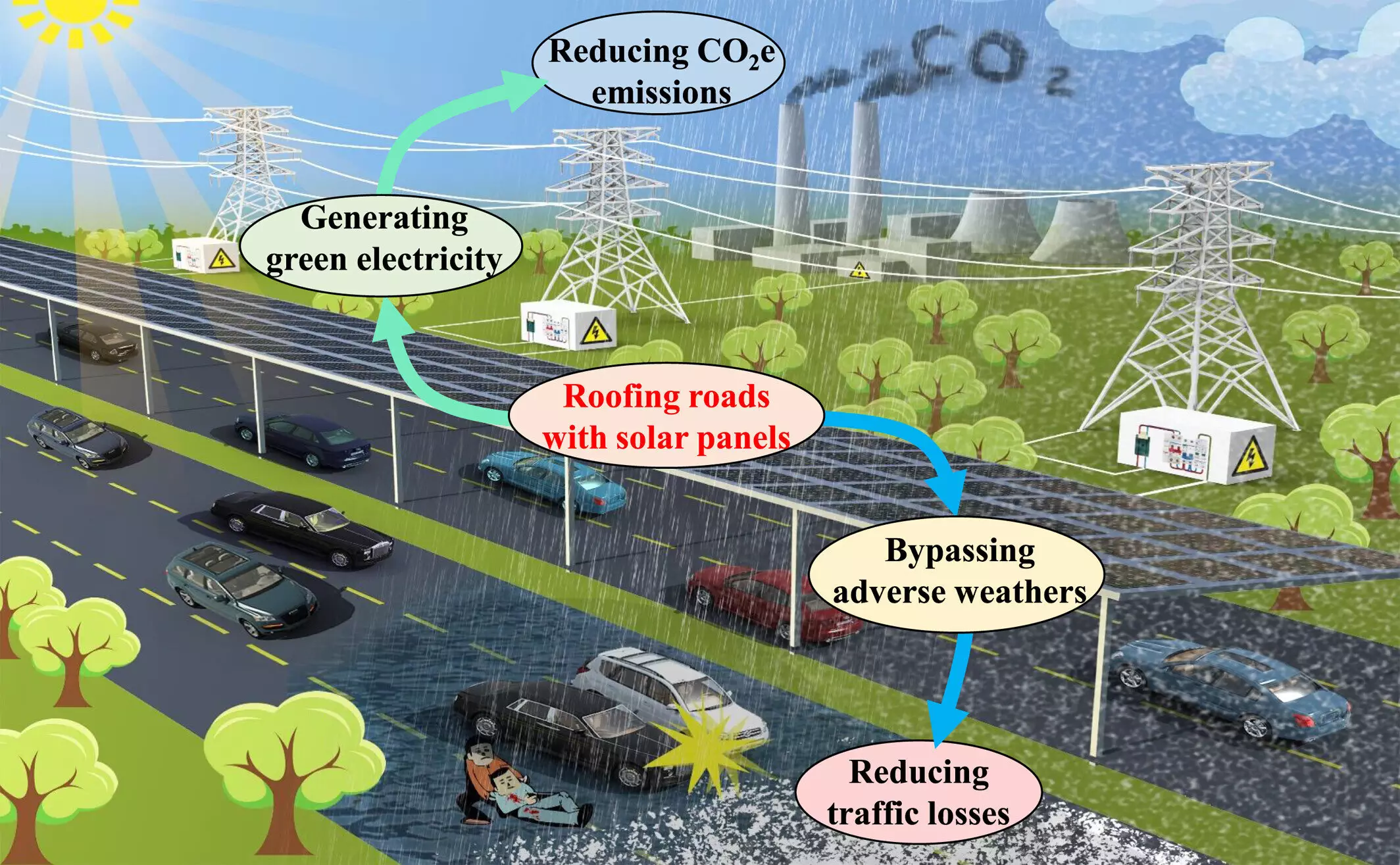In an era where climate change poses an existential threat, innovative solutions to combat carbon emissions are critically needed. A groundbreaking study suggests that covering the world’s highways with solar panel roofs could be a significant step towards achieving sizeable reductions in carbon dioxide emissions and enhancing road safety. The ambitious project envisions a global network of elevated solar panels along major highways, potentially generating an astonishing 17.58 petawatt hours of electricity annually. This staggering power output could account for over 60% of the global electricity consumption projected for 2023, as per research led by Ling Yao from the Chinese Academy of Sciences.
The motivation behind this revolutionary idea emerged during a routine commute, illustrating how everyday situations can inspire groundbreaking concepts. Yao’s revelation that the interconnectedness of roads resembles a network led him to propose utilizing these existing infrastructures for solar energy generation. Such an approach would not only optimize space but would also help mitigate reliance on fossil fuels, addressing the urgent climate targets laid out by the International Panel on Climate Change (IPCC).
The Carbon Footprint Reduction Potential
The environmental implications of transitioning to “solar highways” are compelling. The research indicates that installing solar roofs over highways could significantly decrease global carbon emissions, potentially reducing them by about 28%. Since the world’s highways span over 3.2 million kilometers, equivalent to encircling the Earth multiple times with asphalt, they present an underutilized resource for green energy. In light of the ongoing climate crisis, it is vital to harness all available resources for generating renewable energy, and these highways represent a unique opportunity.
Implementing such extensive solar installations would require around 52.3 billion solar panels, but the benefits could outweigh the costs by a significant margin. By producing up to 17,578 terawatt-hours of electricity annually, highways that double as solar energy producers could offset nearly 9.66 gigatons of carbon dioxide emissions every year. This staggering figure showcases the potential of integrating renewable energy generation directly into urban infrastructure—an idea that must be explored further.
Beyond environmental improvements, solar roofs over highways could have a substantial impact on road safety. The study estimates that traffic fatalities could decrease by approximately 10.8%, particularly in regions plagued by adverse weather conditions. Weather-related hazards pose a significant risk to drivers, but the protective qualities of a solar roof could offer a solution, reducing accidents due to rain, snow, or ice.
Reducing traffic fatalities not only saves lives but also yields economic benefits by lowering costs associated with traffic accidents. By improving highway safety, governments could significantly reduce healthcare costs and emergency response expenditure—benefits that could be reinvested into further safety initiatives or renewable energy projects.
While the prospects of solar highways are enticing, several hurdles must be addressed to transform this innovative idea into a reality. Initial costs present a significant barrier, with installation expenses potentially being four times higher than conventional ground-based solar arrays. Moreover, the logistical challenge of maintaining billions of solar panels cannot be understated, necessitating advanced technologies and methods for cleaning and upkeep.
Despite these challenges, smaller pilot programs are in the works to demonstrate the feasibility of such projects. Success in these initial stages could catalyze wider adoption and implementation of solar roofs on highways. Countries with long, flat stretches of highways—such as those found in the southwestern United States—may find it easier to execute such projects effectively.
The visionary concept of solar panel roofs over highways represents a multi-faceted solution to some of the world’s most pressing challenges—climate change, energy demands, and road safety. By harnessing existing infrastructure for renewable energy production, we could create a sustainable future that aligns with global climate goals. The prospect of transitioning our roadways into a network of clean energy generation is one that warrants not just consideration but action. As we prepare for future challenges, initiative, innovation, and investment in ideas like solar highways could lead us toward a greener, safer world for generations to come.

